Razer Blade 15 (2019) Review
Razer Blade 15 (2019) Review
Ray tracing goes portable with the refreshed Razer
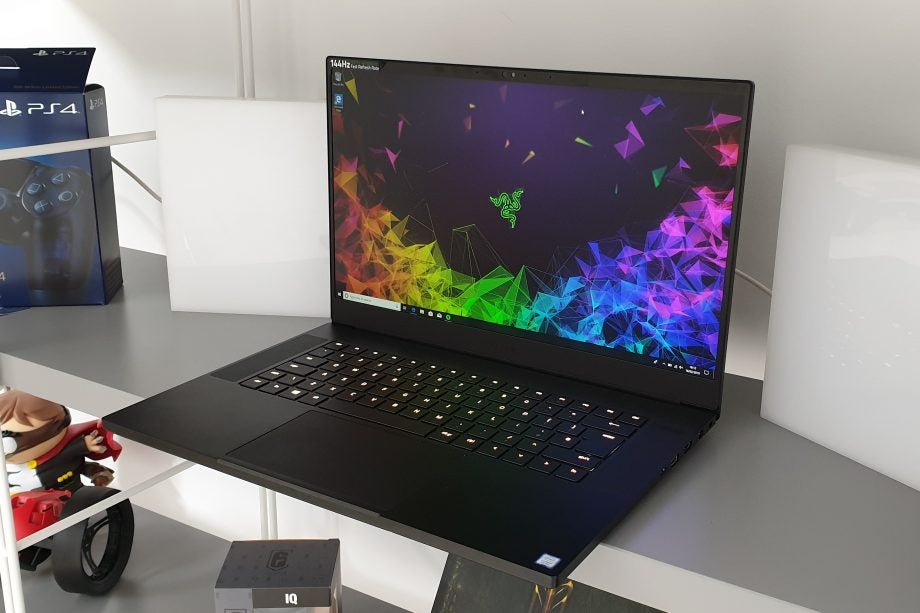
Sections
- Page 1 Razer Blade 15 (2019) Review
- Page 2 Performance Review
- Page 3 Screen Review
- Page 4 Battery Review
Verdict
The Razer Blade 15 may offer ray tracing and one of the best performances found in a gaming laptop, but the lack of DLSS support, G-Sync and 1TB storage make that sky-high price difficult to justify.
Pros
- 60fps in Full HD for almost every video game
- Ray tracing support
- Premium design
Cons
- Ludicrously expensive
- DLSS doesn't work without external monitor
- No G-Sync
- Storage is stingy for the price
Key Specifications
- Review Price: £2849.99
- 1080p and 4K screen options
- Nvidia GTX 1060 and RTX 2060/2070/2080 GPU options
- 8th Gen Intel Core i7-8750H
- 80Wh battery
The 2019 edition of the Razer Blade 15 isn’t too different to last year’s awarding-winning gaming laptop.
The Razer Blade 15 2019 features the same design, same display options and even the same 8th-Gen Intel Core processor, although Razer has since offered up a more expensive 9th-Gen Intel CPU configuration.
The major difference, however, is the introduction of Nvidia’s new RTX graphics cards, which bring a meaty frame rate boost as well as ray tracing capabilities to really enhance the visuals.
This newfangled technology comes at a cost though, with most of the RTX Razer laptops breaking the £2000 barrier – and one model even exceeding £3000. That’s a hell of a lot of dosh considering you can buy gaming laptops with Nvidia 10 Series cards for a little over a grand.
So, are the performance boost and RTX features worth the massive hike in price? Personally I’m not convinced, despite Razer continuing its fine form of producing classy, premium gaming laptops.
- Related: Best Gaming Laptops
The Razer Blade 15 design looks just as fancy as previous models
Why alter perfection? This was clearly Razer’s thinking, as it hasn’t changed a single thing about the physical appearance of this gaming laptop. It still has the same ultra-thin black aluminum chassis and iconic illuminated green logo on the lid. In fact, it’s best to think of the 2019 iteration of the Razer Blade 15 as an additional model, rather than an entirely new entry to the Razer lineup.
You needn’t be concerned about this design stagnating in 2019, with the impossibly thin screen bezel remaining as trendy as Fortnite and avocados. The top bezel is still slightly bulky in comparison, but that’s to accommodate the 1-megapixel webcam – not that you’d want to use it, since its video quality is a fuzzy, pixellated horror.
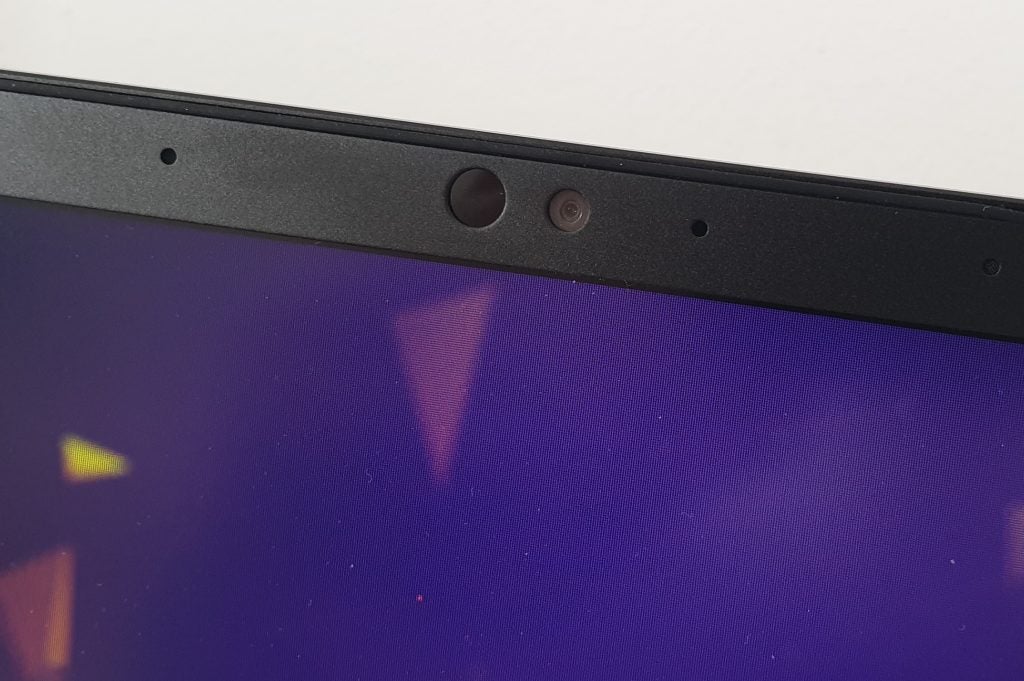
You really won’t want to use the integrated webcam for Twitch streams
Two up-firing speakers sandwich the keyboard. As always with Razer laptops, audio quality is impressive. You can crank the volume up a fair way, while the drivers have sufficient boom for all your grenade explosions. I’d still recommend some gaming headphones instead though.
The same ports make a comeback too, including Thunderbolt (Type-C), USB 3 and HDMI mini-DisplayPort. Don’t worry, there’s also a headphone jack, so you won’t be forced to make the jump to Bluetooth cans just yet.
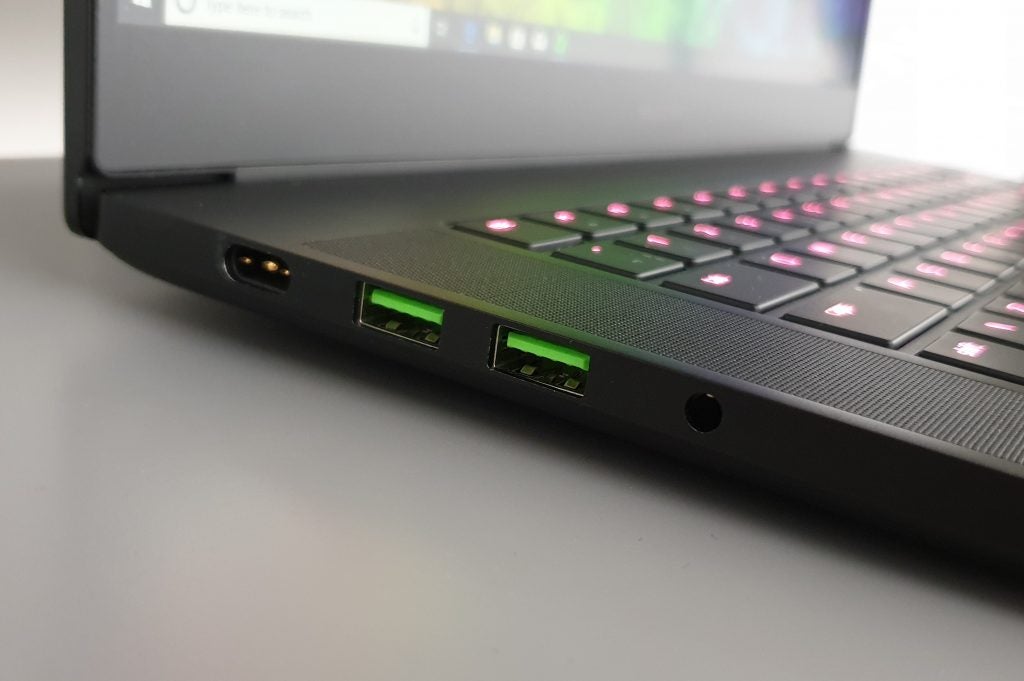
The new Razer Blade 15 has a generous number of ports
The only real physical difference between each model is the dimensions. The base GTX model is slightly thicker than the RTX range, with the former sizing up at 19.9mm and the latter being 17.8mm. The difference in size is likely due to the base model’s dual-storage SSD, giving you 1TB of more space to store your game collection.
With an untweaked design, the Advanced Model also brings back a couple of flaws, mainly the fingerprint-magnet surface. Carry the Blade 15 for a few seconds and you’ll notice fingerprint marks smudged all the casing, leaving the laptop looking grotesquely grimy.
Related: Best Gaming Keyboards 2019
A gaming laptop’s keyboard is never going to compare to the crunchy feel of a mechanical keyboard, but I still expect some sort of tactile feel when I’m spending over £2000 on a portable. Unfortunately, you don’t get that with the Razer Blade 15.

The RGB keys could do with more travel and feedback
If the Razer Blade 15 was an ultrabook I could forgive its shallow keys, but as a high-end gaming laptop, I just don’t think there’s enough travel or feedback here. I couldn’t happily hammer the WASD keys during a first-person shooter. Razer argues you’ll probably just buy an external gaming keyboard anyway, and while that’s true, it’s not a good solution for when you’re on the go.
You can also customise the RGB keyboard lighting, which looks real snazzy without being overbearing. Thanks to Razer Synapse 3 you can sync up the light show to your Razer peripherals, so your gaming mouse and headset all glow in satisfying union.
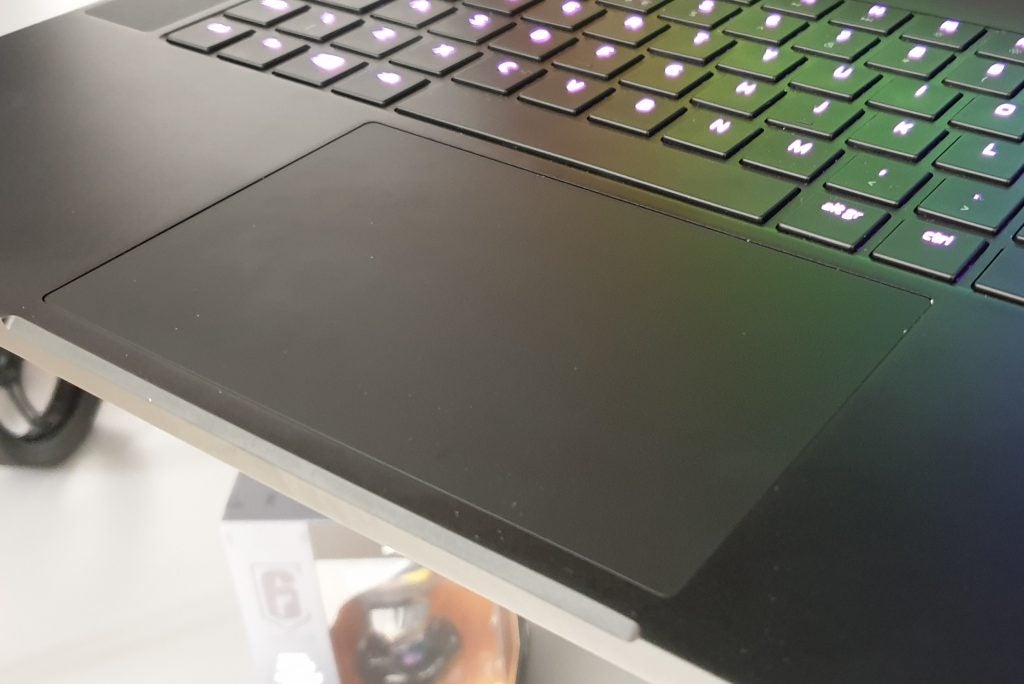
The glass trackpad here is one of my all-time favourite in a gaming laptop
The glass touchpad makes a return. I’m a big fan of it, being super smooth and ultra responsive. You’ll likely want more accuracy for first-person shooters, so buying a gaming mouse is a good idea. But compared to rival gaming laptops, this is probably my favourite trackpad.
The Razer Blade 15 display is superb for gaming, but lacks G-Sync
Every RTX Blade 15 laptop is available with a Full HD display and 144Hz refresh rate at a minimum, ensuring a super-smooth experience for any game you load up.
There are several upgrade options too. If you want a 4K display, you can upgrade that, or, if you prefer to game in Full HD, there are 144Hz and 240Hz options available with the RTX 2070 and RTX 2080 options, too. For those with cash to burn, you can even splash out on a 4K OLED, if you want contrast levels and colours to really soar.
Disappointingly, there’s no option of an RTX laptop with a Full HD 60Hz display. This would have been an incredibly useful option for those who fancy feasting their eyes on the new ray tracing technology, but aren’t prepared to cough up the extra cash for all the other premium trimmings.
- Related: Best Gaming Monitors 2019
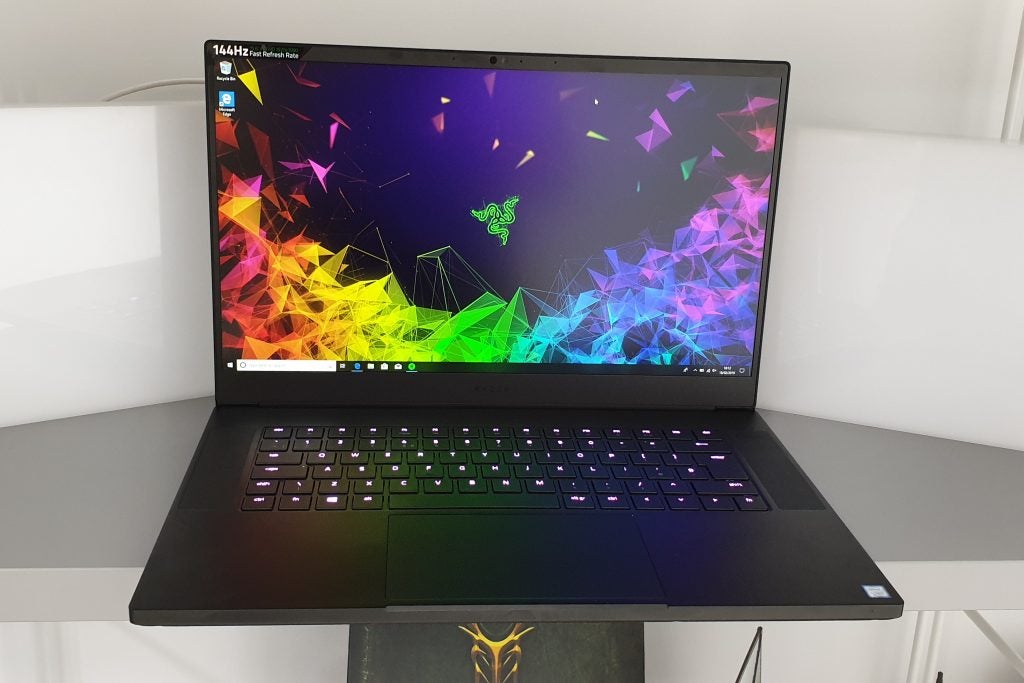
The 144Hz refresh rate ensures a super-smooth visual performance for games
Even more disappointing, not one of the RTX Blade 15 laptops have Nvidia’s G-Sync. For those unfamiliar, this technology syncs up the GPU’s frame rates to the display’s refresh rate in order to prevent screen tearing.
I noticed this ugly effect a few times in both Battlefield 5 and Metro Exodus with the Razer Blade. Significantly cheaper gaming laptops can be forgiven for not including G-Sync or FreeSync, but since we’re talking about laptops costing over £2000, this omission is a real let down.
How does the display actually look? To the human eye, the Razer display seems solid, the screensaver immediately catching the eye with a rainbow-spectrum of colours.
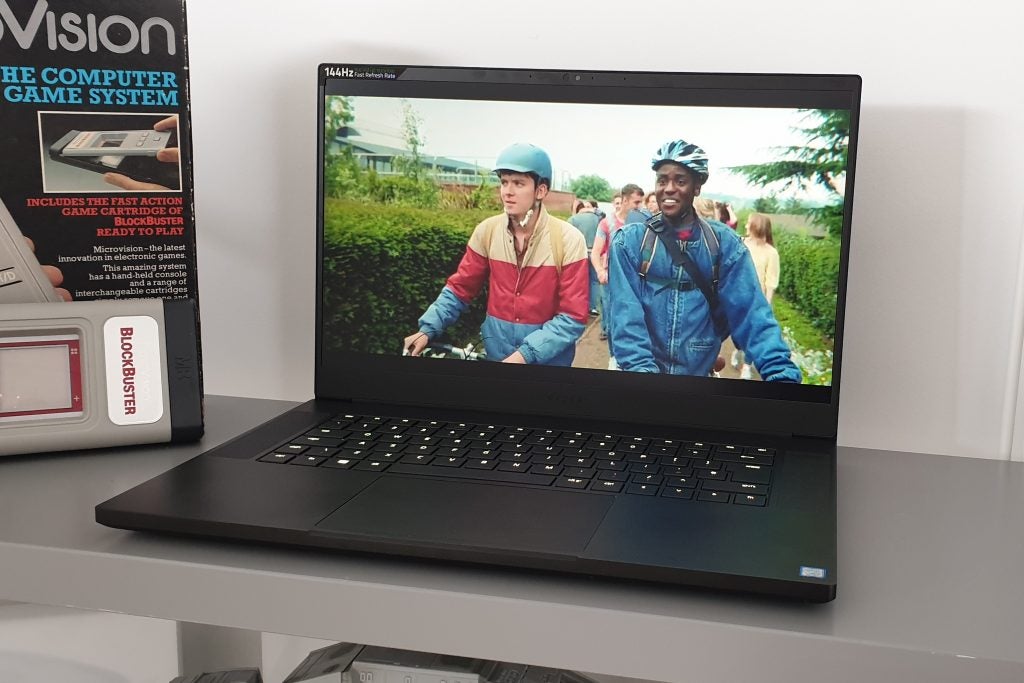
The Razer has a lovely rich display great for both gaming and Netflix bingeing
However, our colorimeter tests show that while Razer’s screen is decent enough for a great gaming experience, it’s far from making the grade to satisfy professional creatives who require colours to be displayed as accurately as possible.
- If you want more in-depth results for the display, head over to our Razer Blade 15 Screen Review page
Overall then, the Razer Blade display isn’t spectacular, but is still decent enough for a great gaming visual experience. But at such an extravagant price, missing features such as G-Sync are really difficult to forgive.
There’s a Razer Blade 15 configuration for every budget
Since the Razer Blade 15 (2019) first launched, Razer has steadily introduced more configurations to an already generous lineup.
The most important thing to know is that there are four graphics card options, ranging from the Nvidia 10-Series GTX 1060 Max-Q all the way up to the ray tracing-capable Nvidia 20-Series RTX 2080 Max-Q.
There are plenty of other alterations you can make to your Razer Blade 15 laptop too, including processor, storage and display, with the refresh rate, resolution and screen type all customisable.
| Option 1 | Option 2 | Option 3 | Option 4 | |
| GPU | Nvidia GeForce GTX 1060 Max-Q | Nvidia GeForce RTX 2060 | Nvidia GeForce RTX 2070 Max-Q | Nvidia GeForce RTX 2080 Max-Q |
| Display | 15.6-inch Full HD, 60Hz | 15.6-inch Full HD, 144Hz | 15.6-inch, Full HD/4K, 60Hz/144Hz/240Hz | 15.6-inch, Full HD/4K, 60Hz/144Hz/240Hz |
| CPU | 8th Gen Intel Core processor | 8th Gen / 9th Gen Intel Core processor | 8th Gen / 9th Gen Intel Core processor | 8th Gen / 9th Gen Intel Core processor |
| RAM | 16GB DDR4 | 16GB DDR4 | 16GB DDR4 | 16GB DDR4 |
| Storage | 128GB SSD + 1TB HDD / 256GB SSD + 2TB HDD | 512GB SSD | 256GB SSD / 512GB SSD | 512GB SSD |
| Price | From £1389.99 | From £1899.99 | From £2209.99 | From £2669.99 |
- Related: Best Graphics Cards 2019
There’s an impressive range of options here – which only seems to be growing – that can appeal to a broad audience. The cheapest model costs £1389.99 while the most expensive will set you back £3149.99 – that’s a whopping £1760 difference. The lineup can be seen in the table below.
The Razer Blade 15 is a seriously powerful gaming laptop
I called in the RTX 2070 and RTX 2080 configurations of the Razer Blade 15 for testing, and found these laptops boast monster performances. Both the GPU and CPU deliver, posting some of the best results I’ve ever seen in gaming laptop.
The CPU is fast enough to blitz through multi-tasking jobs. There’s easily enough processing power here to plough through any video game. I never saw the Blade 15 struggle with multiple tabs, while CPU-intensive titles like Civilization 6 will really benefit.
We’ve tested the Razer Blade 15 with both the 8th Gen and 9th Gen Intel Core processors, and can confirm both will easily meet your super-speedy needs. Going for the more powerful option out of the two will provide a minor performance boost, but it’s not significant enough to make a noticeable difference so I suggest hesitance if you’re considering upgrading.
It’s the GPU performance that makes the Razer Blade 15 one of the most powerful gaming laptops currently available. We tested the two laptops with two of the most demanding games currently available in Shadow of the Tomb Raider and Ghost Recon Wildlands. For the former title, the two Razer laptops saw frame rates glide effortlessly past the 60fps performance target while running the game in Full HD with all the graphics settings pushed up to the ‘Ultra’ preset.
But while playing Ghost Recon Wildlands with maxed out settings in HD, neither the RTX 2070 or RTX 2080 Razer Blade 15 could quite reach the 60fps golden standard, but they were both very close. Scaling down the graphical settings will sort this out though, so I can still confidently say both gaming laptops will be able to play any AAA game you fancy.
- Check out the Razer Blade 15 Performance review page for the desktop’s in-depth benchmark results
The RTX graphics cards bring along a slew of special DXR features, with ray tracing being the most significant. Nvidia’s new technology enables more realistic light and reflection rendering.
In Metro Exodus, I could see the reflection of derelict skyscrapers in the murky puddles of the trenches. Light also seemed more atmospheric, as it seeped through the gloomy clouds above. All of these improvements are subtle and difficult to notice without being aware of them beforehand.
On left: DXR turned off. On right: DXR turned on (Game: Battlefield 5)
- Related: What is ray tracing?
At the very least, ray tracing offers an exciting glimpse into the future for video game visuals – but I’m concerned there are more negative points than positive in its current state, with limited game support and technical hiccups proving problematic.
For instance, the supported DLSS feature – purpose-designed to recoup the frame rate drop that ray tracing brings – not only negatively impacts the visuals in a game, but won’t even function with the RTX 2080 edition of the Razer Blade 15 with a Full HD display.
It’s not a massive surprise the Razer Blade 15 makes a fair bit of noise when running video games. It’s not loud enough to become audible over the booms and blasts of your favourite shooter, but it’s still mildly annoying during quiet cut scenes and loading screens.
More concerning is the heat generated by the Blade 15. It doesn’t get hot enough to become uncomfortable to touch or make you worried it’s about to explode like a boiled egg in a microwave, but it’s still alarming to think all those pricey components are getting a roasting.
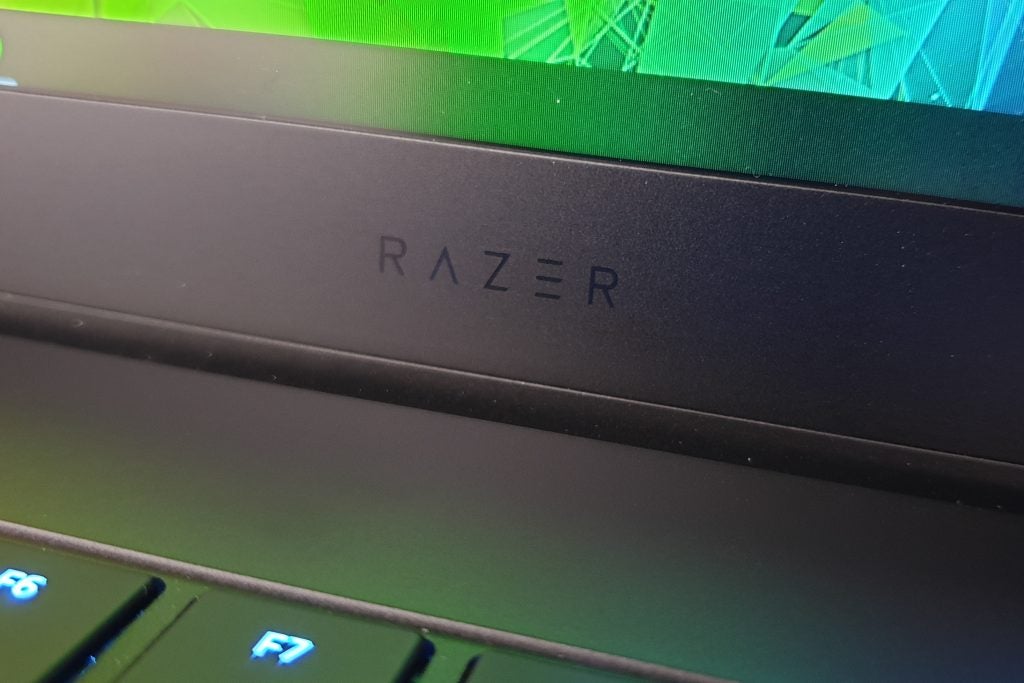
I’d love the option of an RTX Razer Blade 15 with 1TB storage
The RTX Razer Blade 15 laptops have a max storage option of 512GB. That’s pretty stingy. With GTA V taking up 70GB alone, it won’t take many AAA games to clog up the Blade’s storage.
While a 512GB hard drive is forgivable for a laptop costing under £2000, it’s less excusable when it costs near-to £3000. And even if Razer’s reasoning is that it doesn’t want to drive up the price further, it would at least be nice to have the option to upgrade to a 1TB model.
- Related: Best SSD 2019
Onto more positive news, the RTX 2080 model of the Razer Blade 15 showcases excellent read and write speeds at 3280.8 MB/s and 1859.6 MB/s respectively. I haven’t seen any other gaming laptop match these scores in the past six months. This means the Razer Blade 15 will be seriously nippy when saving or loading files stored in the laptop.
The Razer Blade 15 sacrifices battery life for GPU performance
With such a sleek form and ultra-strong components, the Razer Blade 15 was never going to have a long-lasting battery life. I’ve found gaming laptops to only last 5 hours on average anyway.
However, I was still dismayed to find the Razer Blade 15 could only just about muster 4 hours with casual browsing and video playback simulated via the benchmark software Powermark.
- Want a closer look at how the battery fared? Check out the Razer Blade 15 Battery review page for the full details
While I didn’t get time to test the battery for gaming, expect it to be significantly shorter than the 4-hour figure, especially if playing a high-end game like Far Cry or Metro Exodus.
I’ve found with other Razer laptops that switching off the RGB lighting on the keyboard can boost the battery life by another hour or two sometimes, but I don’t really see much value to this considering this is one of the key features that transforms the Blade 15 from a slab of aluminium to a seriously good looking gaming laptop.
Should I buy the Razer Blade 15 (2019)?
I’m a big fan of Razer laptops. They always boast quality and stylish designs, while offering a performance that can outgun the majority of the competition. The new RTX Razer Blade 15 gaming portables are no different. However, the added cost of the RTX graphics card may just be too much to forgive this time around.
Ray tracing is certainly a fantastic feature, providing an extra polish to stunning environments in the likes of Metro Exodus and Battlefield 5, but since ray tracing is currently limited to two games, negatively impacts frame rates without DLSS and is at times too subtle an effect to justify such a massive price hike, I’m not convinced the technology is ready to be a major selling point just yet.
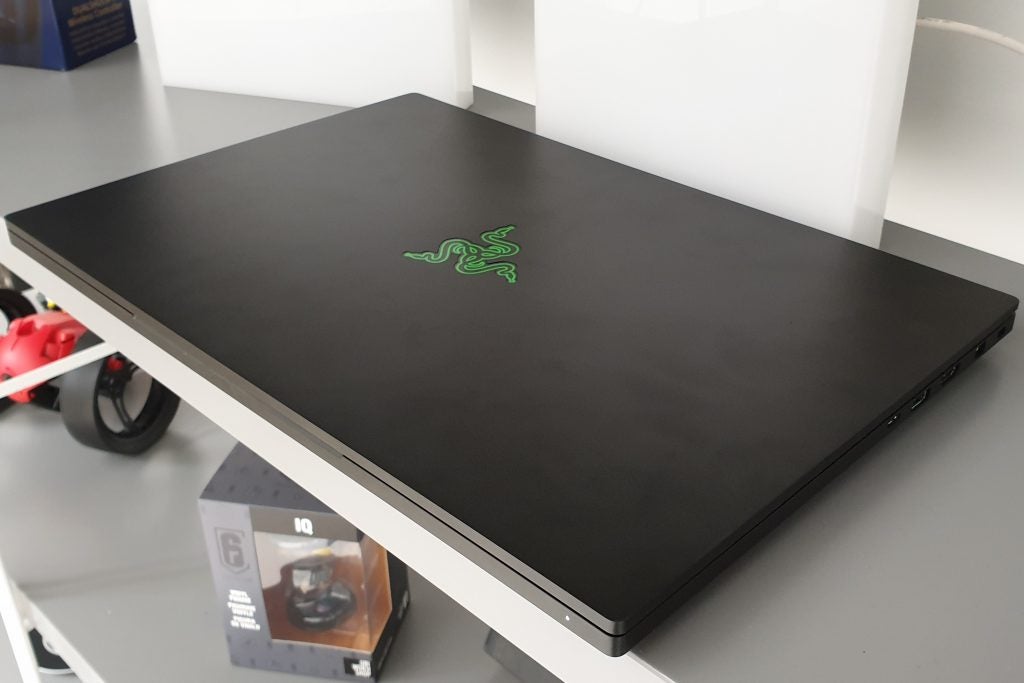
While it’s certainly no ultrabook, the new Razer Blade 15 is shockingly light
If you’re happy to fling your money about and fancy one of the most powerful gaming laptops on the market, the Razer Blade 15 will at least give you a performance to brag about. But if you’re looking for value with your gaming laptop purchase, there are better alternatives on offer.
Verdict
The Razer Blade 15 may offer ray tracing and one of the best performances currently found in a gaming laptop, but the lack of DLSS support, G-Sync and 1TB storage make that sky-high price difficult to justify.
How we test laptops
Unlike other sites, we test every laptop we review thoroughly over an extended period of time. We use industry standard tests to compare features properly. We’ll always tell you what we find. We never, ever, accept money to review a product.


